Disclosure: This article contains affiliate links. We may earn a commission from purchases at no extra cost to you, which helps our travel content.
Standing at the base of Meteora's towering rock pillars, I felt the same rush of anticipation I used to get before important tennis matches back in Boise. The difference? Instead of facing an opponent across the net, I was about to scale a vertical rock face that's been challenging climbers for decades. After three years working at the Irish Department of Foreign Affairs, I've mastered the art of maximizing my limited vacation days. This spring, I dedicated a week to exploring Meteora's outdoor offerings beyond the famous monasteries that most tourists come to see. What I discovered was an adventure playground for solo travelers willing to push their limits among some of the most unique geological formations in Europe. Whether you're an experienced climber seeking new routes or a hiker wanting to experience Meteora from angles most visitors never see, this rugged corner of Greece deserves a spot at the top of your adventure bucket list.
Preparing for Meteora's Vertical Challenges
Meteora isn't just a casual climbing destination – it demands respect and proper preparation. Having climbed in Portugal and Croatia previously, I still found Meteora's unique conglomerate rock formations to present a distinctive challenge.
Before arriving, I spent weeks strengthening my grip and endurance. Government work keeps me desk-bound most days, so I made a point to hit the climbing gym three times weekly leading up to the trip. This preparation proved invaluable once I was facing Meteora's demanding routes.
Packing properly is crucial. My climbing shoes were perfect for Meteora's varied surfaces – grippy enough for the smoother sections while providing good edge support. The unique rock composition here – a mixture of conglomerate with embedded rounded stones – creates climbing challenges you won't find elsewhere.
I booked my trip through Visit Meteora, arranging a local guide for the first two days. This was money well spent, as my guide Dimitris not only showed me the safest routes but shared stories about the area's climbing history dating back to the 1970s. He pointed out routes first established by German climbers and showed me where modern sport climbing routes have been bolted more recently.
For accommodations, I stayed at a small guesthouse in Kastraki village. While you could base yourself in the larger town of Kalambaka, I preferred being within walking distance of the trails and climbing areas. Most guesthouses cater to climbers with early breakfasts and packed lunch options.
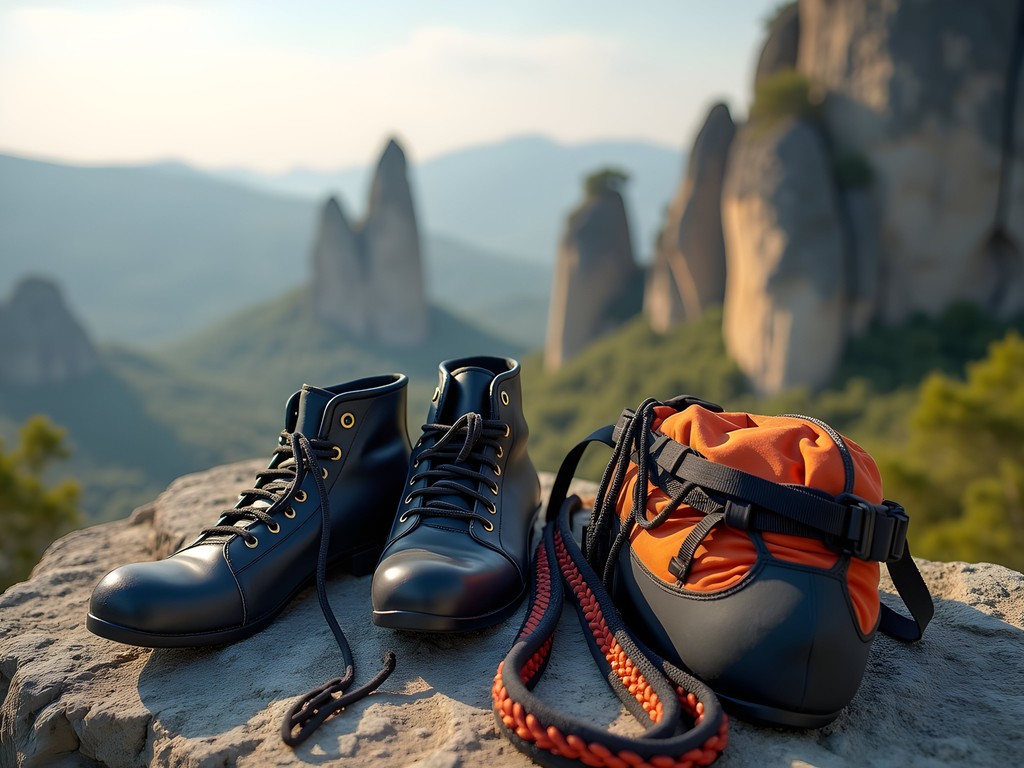
💡 Pro Tips
- Book a local climbing guide for at least your first day to learn about the unique rock composition and safety considerations
- Stay in Kastraki village for the closest access to climbing and hiking routes
- Purchase a Meteora climbing guidebook before your trip – the Meteora Sport Climbing Guide by Aris Theodoropoulos is excellent
Top Climbing Routes for Advanced Solo Climbers
Meteora offers over 700 routes across its unique pillars, but as a solo traveler, I focused on areas where other climbers congregated for safety reasons. The Doupiani House area quickly became my favorite spot – not only for its moderate to difficult routes but also for the easy opportunity to connect with fellow climbers.
My first significant climb was 'Pyxida' (Compass), a challenging 6b+ route on the Doupiani Rock. The route features a mix of slab climbing transitioning to more vertical sections with small but positive holds. What makes it special is the panoramic view of the monasteries as you ascend – a perspective few tourists ever experience.
For more technical challenges, I spent a day at the Holy Ghost area, tackling 'Hypotenuse' (7a), which tested my endurance with its sustained difficulty. The satisfaction of topping out with views of Rousanou Monastery in the distance made every strenuous move worthwhile.
One of the most memorable experiences was climbing 'Pillar of Dreams' (6c), a multi-pitch route on Sourloti Pillar. I partnered with a German climber I met at my guesthouse, and we spent five hours completing the route, pausing occasionally to watch eagles soaring at eye level – a surreal experience that connected me to the ancient monks who first scaled these towers using rudimentary ladders and ropes.
My climbing helmet proved essential here – not just for protection from falling rocks (a real concern on Meteora's conglomerate formations) but also from the intense Greek sun during long routes. The ventilation kept me cool while the adjustable harness ensured comfort during multi-hour climbs.
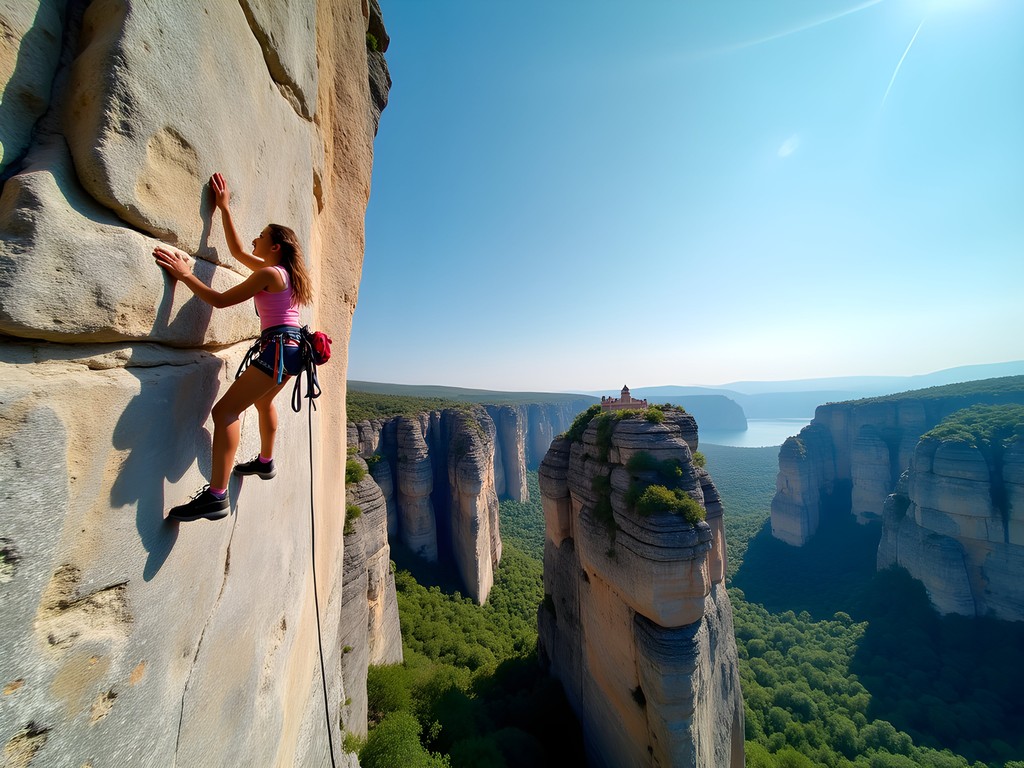
💡 Pro Tips
- Always check in with local climbing shops for current route conditions and potential closures
- The Great Saint (Megalo Agio) area offers excellent afternoon shade climbing when other walls become too hot
- Consider hiring a guide for multi-pitch routes if it's your first time climbing in Meteora
Hidden Hiking Trails Between the Pillars
While climbing offers the vertical Meteora experience, hiking provides a different but equally rewarding perspective. The network of trails winding between the massive pillars reveals hidden viewpoints and connects you to the landscape in ways most monastery-focused tourists miss entirely.
My favorite discovery was the Ypapanti Monastery trail, which few visitors know about. This moderately difficult 7km loop takes you past the rarely visited Ypapanti Monastery (often closed to the public) and through a forest that eventually opens to spectacular viewpoints of the entire Meteora complex. I started this hike at dawn, and the morning light casting long shadows from the pillars created a photographer's dream landscape.
For a more challenging day, I combined the Great Meteora and Varlaam monasteries trail with extensions to several unmarked viewpoints my guesthouse owner had marked on my map. This 12km route involved some light scrambling in sections but rewarded me with perspectives of the formations that most visitors never see. My hiking boots provided the perfect balance of support and flexibility for navigating the varied terrain, from well-maintained paths to rockier sections requiring careful footing.
The most memorable hiking moment came on the trail behind Agia Triada monastery, where a narrow path leads to a natural rock arch. Sitting alone beneath this formation as the sunset painted the rocks in warm orange hues, I felt connected to both the natural history and human history of this remarkable place. This spot also offered excellent phone reception – I couldn't resist sending a quick update to my colleagues back at the Department of Foreign Affairs, who've become accustomed to receiving photos from my adventures between diplomatic briefings.
Many of these trails intersect, allowing you to create custom routes based on your fitness level and interests. I tracked all my hikes using AllTrails, which proved invaluable for navigating some of the less-marked sections.
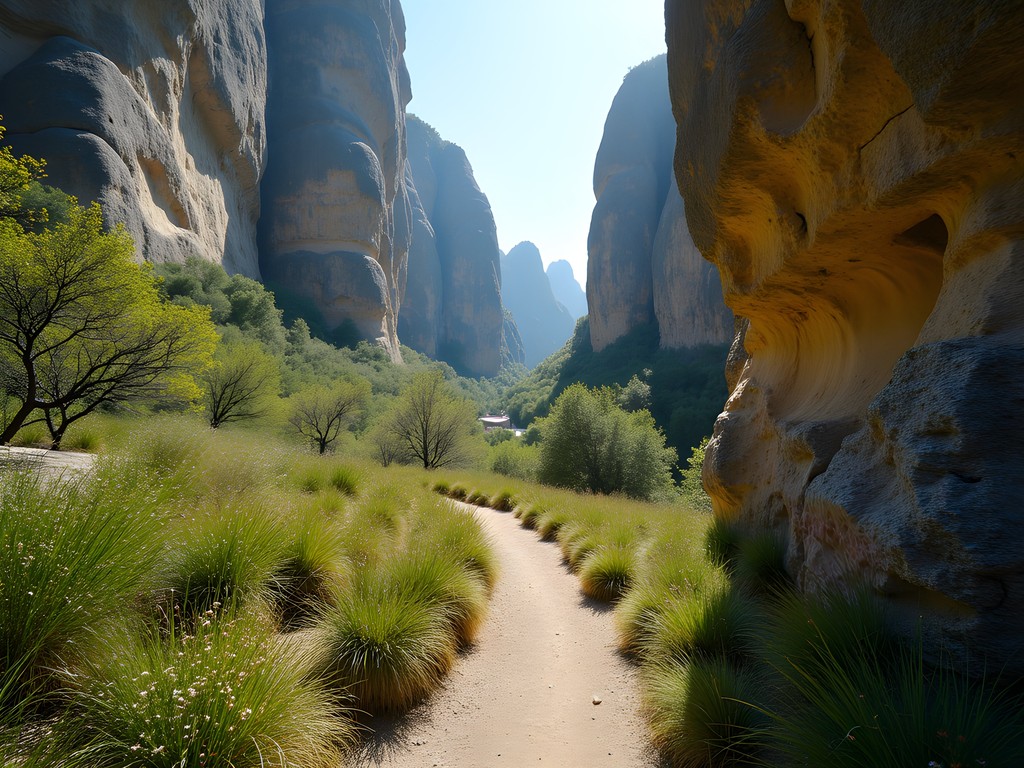
💡 Pro Tips
- Start hiking early (before 8am) to avoid both heat and crowds at monastery crossover points
- The trail connecting Agia Triada to Agios Stefanos offers the best sunset views
- Carry at least 2 liters of water – there are few refill points once you're on the trails
Balancing Monastery Visits with Adventure Activities
While my focus was on Meteora's outdoor adventures, I couldn't ignore the magnificent monasteries that made the region famous. The key was finding the right balance and timing to enjoy both without crowds diminishing the experience.
I discovered that most tour buses arrive between 10am and 4pm, making early morning or late afternoon the perfect times for monastery visits. Great Meteora Monastery opens at 9am, and arriving right at opening gave me nearly 30 minutes of peaceful exploration before the first large groups arrived. Similarly, Varlaam Monastery was magical in the last hour before closing.
Between these monastery visits, I scheduled my more intense climbing sessions for mid-day when the monasteries were at their busiest. This rhythm allowed me to experience both the cultural and adventure aspects of Meteora without feeling rushed or crowded.
One particularly successful strategy was climbing in the Pixari and Doupiani areas, which offer excellent views of the monasteries from unique angles. This way, I could photograph the monasteries from perspectives impossible to achieve from standard viewing platforms. My compact camera was perfect for this dual-purpose travel – lightweight enough to bring climbing yet powerful enough to capture detailed shots of distant monasteries with its zoom capability.
For solo travelers, this balanced approach offers another advantage: you'll meet different types of people throughout the day. Morning monastery visits connected me with independent travelers and photographers, while climbing introduced me to the international climbing community. By evening, sharing stories at local tavernas in Kastraki village, I'd formed friendships with both groups.
Don't miss Roussanou Monastery, which is perched on a narrower rock pillar than the others. I visited late afternoon when the light was golden, then hiked down to a viewpoint below for a perfect sunset shot of the monastery against the darkening sky – a moment of tranquility that balanced the adrenaline of the day's climbing.
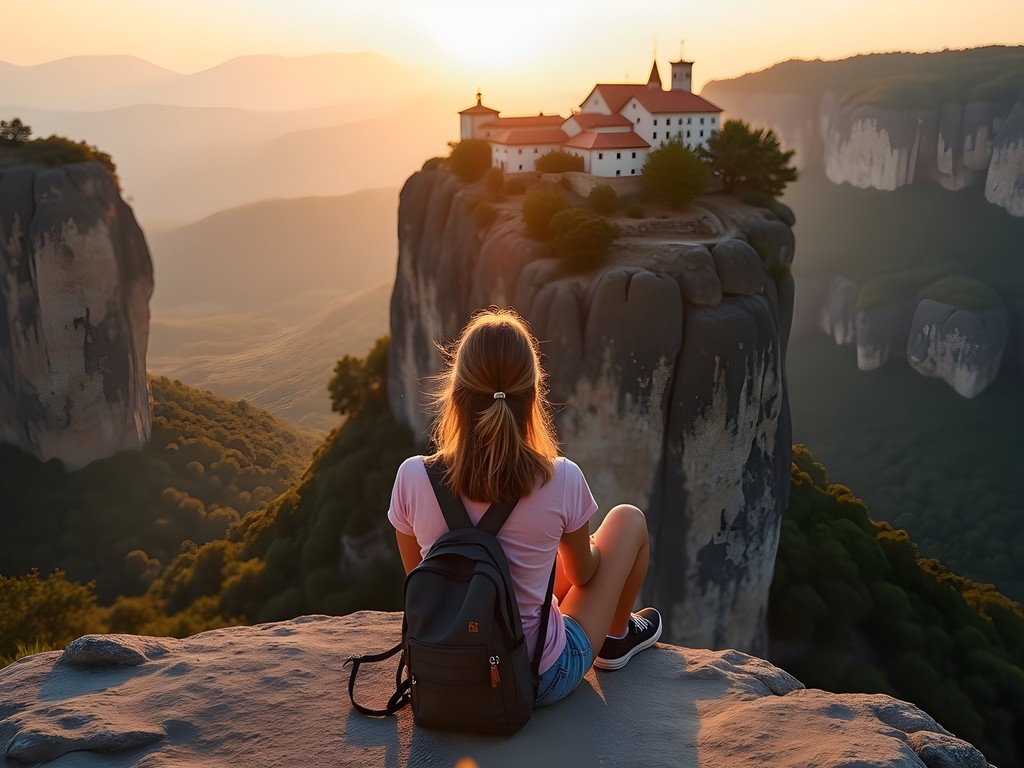
💡 Pro Tips
- Purchase a combination ticket if you plan to visit multiple monasteries
- Remember appropriate dress code for monasteries: covered shoulders and knees (they provide wrap skirts if needed)
- Holy Trinity Monastery (Agia Triada) involves the most steps but offers the most dramatic approach
Finding Remote Work Spots Between Adventures
Even during dedicated adventure trips, my government role occasionally requires checking in. Finding quality spots to connect and work briefly became an unexpected highlight of my Meteora experience.
Kastraki village surprised me with several excellent options. Meteoron Panorama Café became my morning office on two occasions, offering not just reliable WiFi but also a stunning view of the rock formations from its terrace. The owners understood the digital nomad mindset and were happy to let me occupy a corner table with my laptop for a couple of hours while enjoying their excellent Greek coffee.
For a more immersive work session, I discovered Meteora Central Guesthouse has a dedicated coworking space for guests – a rarity in such a small village. With proper desks, ergonomic chairs, and fast internet, I was able to join a video conference with colleagues in Dublin without the usual technical challenges of working remotely.
In Kalambaka, the larger town below Meteora, I found Café Plakias offered both indoor and outdoor seating with reliable connectivity. The background of massive rock pillars visible from their patio made for impressive video call backdrops – my colleagues were suitably jealous of my temporary office view.
The rhythm of adventure and work created a perfect balance. I'd rise early for sunrise hikes or climbing, return mid-day for a couple of hours of connectivity if needed, then head back out for afternoon adventures. This approach mirrors how I've structured my tennis training throughout my life – intense focus followed by strategic recovery periods.
For fellow government employees or anyone needing to stay connected while exploring, I recommend downloading offline maps and documents before heading out on the trails. Cell coverage is surprisingly good on many of the higher trails, but having offline backups ensured I was never caught unprepared for an urgent work matter.

💡 Pro Tips
- Meteoron Panorama Café has the best WiFi speed combined with inspiring views
- Download offline copies of important documents before heading into areas with spotty coverage
- Most accommodations in Kastraki now offer reliable WiFi, but confirm speeds if you need video conferencing capabilities
Final Thoughts
Meteora delivered the perfect balance of physical challenge, natural beauty, and cultural richness that I seek in my adventures between diplomatic assignments. While most visitors come for the monasteries alone, the true magic of this UNESCO World Heritage site reveals itself to those willing to explore vertically as well as horizontally. The climbing community I found here was welcoming and international – much like the tennis circles of my youth – creating instant connections through shared challenges on the rock. Whether you're an experienced climber seeking new routes or a hiker wanting perspectives beyond the standard viewpoints, Meteora rewards those willing to venture beyond the tour bus stops. As I flew back to my government desk in Cork, I carried with me not just photos of monasteries but the muscle memory of climbing routes and hiking paths that connected me to this landscape in ways most visitors never experience. The diplomatic skills I've developed professionally – patience, strategic thinking, and cultural adaptability – served me equally well navigating Meteora's vertical challenges.
✨ Key Takeaways
- Meteora offers world-class climbing opportunities for advanced climbers with over 700 routes of varying difficulties
- The best hiking experiences come from combining official trails with local knowledge to find hidden viewpoints
- Visiting monasteries during early morning or late afternoon helps avoid crowds and creates a more meaningful experience
- The villages of Kastraki and Kalambaka offer surprisingly good options for remote work between adventures
📋 Practical Information
Best Time to Visit
Mid-April to early June for ideal climbing conditions and spring wildflowers
Budget Estimate
€600-800 for a week including accommodation, climbing guide for 2 days, and meals
Recommended Duration
5-7 days to experience both climbing and hiking properly
Difficulty Level
Advanced For Climbing, Moderate To Challenging For Hiking


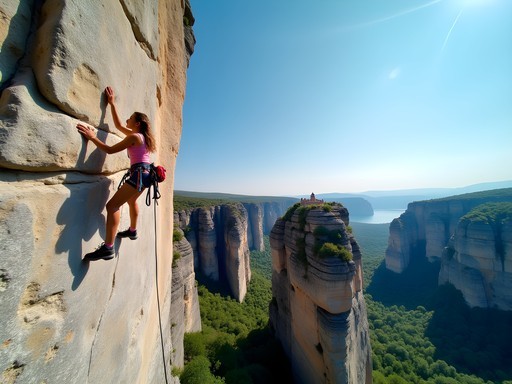
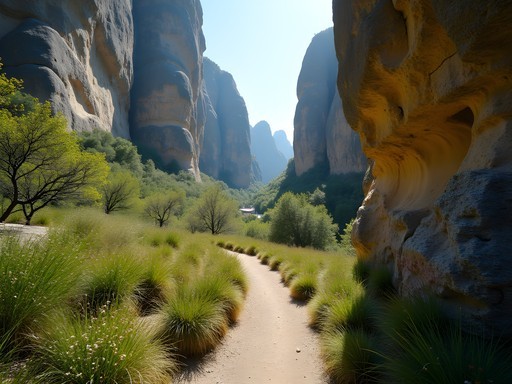
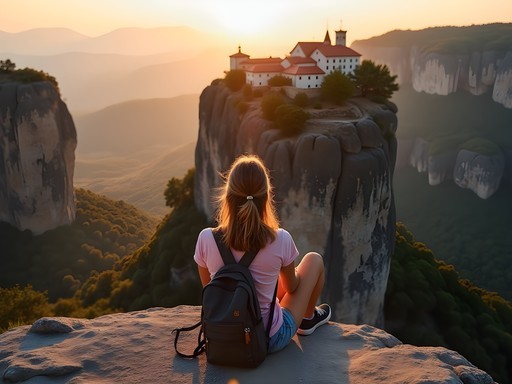
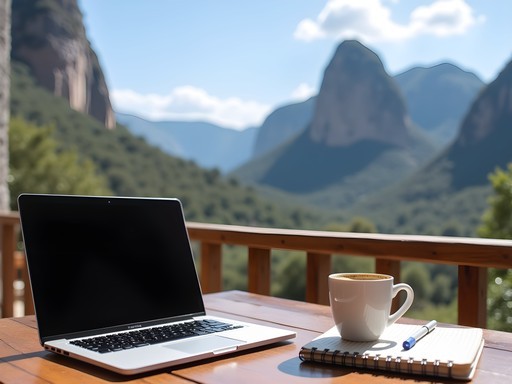


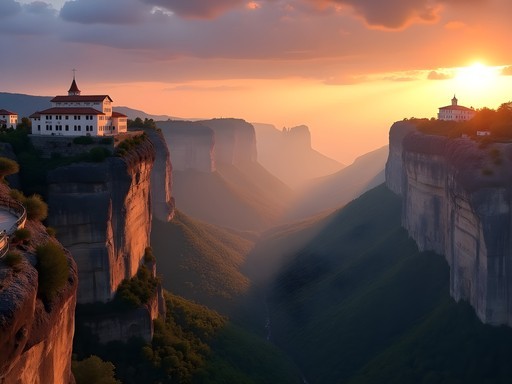
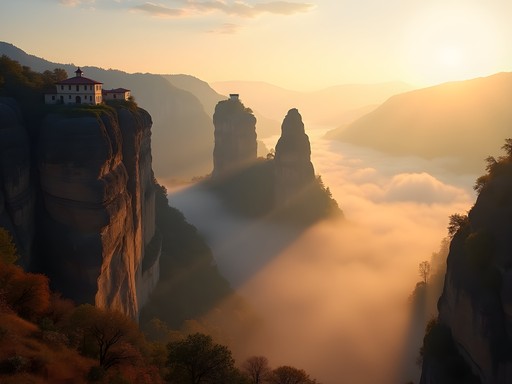
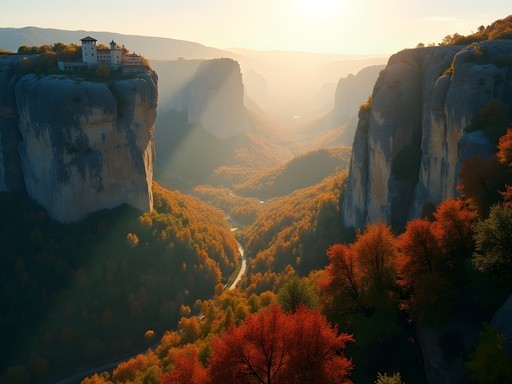
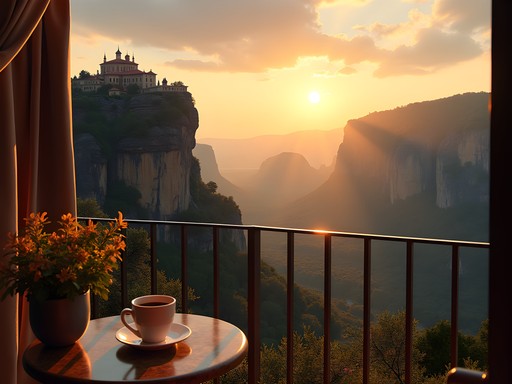




Comments
redway
How many days would you recommend staying in Meteora to do both the monasteries and some hiking? Is it doable as a weekend trip from Athens?
Bella Ward
I'd recommend at least 3 days to really enjoy it. A weekend is possible but rushed - the train from Athens takes about 4 hours each way. If you only have a weekend, focus on 2 monasteries and 1 hike rather than trying to do it all!
Jean Wells
I agree with Bella. Three days minimum. Also consider staying in Kastraki rather than Kalambaka - it's closer to the trails and has a more intimate atmosphere.
roamhero
That sunset shot from the top of Pixari pillar is UNREAL! Definitely adding Meteora to my 2026 bucket list!
wanderlust_jane
Love how you balanced the spiritual and adventure aspects! Perfect combo.
beachmate
This looks incredible! I'm an experienced hiker but total beginner at climbing. Are there any routes in Meteora suitable for first-timers that still give you those amazing views?
Bella Ward
Absolutely! Check out the beginner routes at Doupiani Rock - they have great views and several guide companies offer intro lessons. The hiking trail from Great Meteoron to Varlaam also gives you stunning vistas without any climbing.
wildclimber
Can confirm! I did a beginner course with Meteora Climbing School and they were fantastic for newbies. Super patient instructors.
Jean Wells
Your analysis of balancing monastery visits with climbing activities is spot on, Bella. When I visited Meteora last year, I found that early morning monastery visits (before 9am) followed by afternoon climbs worked best. The light for photography is superior in the morning hours at the monasteries, and the rock faces are less hot for climbing after 3pm. I'd add that the Spindle route you mentioned becomes particularly challenging in windy conditions - worth monitoring weather forecasts carefully. Did you encounter any access issues with the newer restricted climbing areas near Agios Nikolaos?
Bella Ward
Great tip about the morning monastery visits, Jean! I didn't have any access issues near Agios Nikolaos, but I did hear they're considering some new restrictions. The local guides were really helpful with navigating what was open.
wildclimber
Bella, this post brought back amazing memories! I climbed the Great Saint route last summer and it was absolutely incredible. The views from up there are something else entirely. Did you find the transition from tennis to climbing challenging? I've always found that former athletes pick up climbing techniques super quickly.
Bella Ward
Thanks wildclimber! The body awareness from tennis definitely helped, but the grip strength was a whole different beast at first. Worth every callus though!
wildclimber
So true about the grip strength! Did you use any training tools before your trip?
Bella Ward
I used a hangboard for about 2 months before the trip. Made a huge difference!
climbingfan22
Those rock formations are absolutely stunning! Adding this to my bucket list immediately.
photomood
Just got back from Meteora last week and followed some of your recommendations! That sunrise hike to the eastern viewpoint was magical - we had the entire place to ourselves for almost an hour. The contrast between the spiritual monasteries and the adrenaline of the climbing routes makes this place truly unique. We weren't brave enough for the advanced routes, but even the beginner climbing session with a local guide was thrilling. Did you happen to visit the natural history museum in Kalambaka? It was an unexpected gem on a rainy afternoon.
luckyguy
Great post! How difficult would you say the hiking is for someone moderately fit but not a climber? My wife and I want to visit but we're more into photography than serious climbing.
Bella Ward
You'll be totally fine! There are plenty of well-marked hiking paths that don't require any technical climbing skills. The trail from Great Meteoron to Varlaam monastery is particularly scenic and relatively easy. Just wear proper hiking shoes as some sections can be slippery. The views are absolutely worth it for photography!
luckyguy
That's perfect, thanks! Did you use any special camera gear for those amazing sunset shots? I'm debating whether to bring my tripod or just rely on handheld.
Bella Ward
Definitely bring the tripod! The light changes quickly during sunset and you'll want longer exposures. Some of the viewpoints have limited space though, so a compact tripod is ideal.
Hannah Woods
Excellent write-up, Bella! I appreciate your focus on the adventure aspects of Meteora rather than just the monasteries. Your section on hidden hiking trails was particularly valuable - I followed your advice on the trail between Agios Nikolaos and Roussanou last month and the views were absolutely spectacular without the crowds. One thing I'd add for solo female climbers: I found the climbing community in Kastraki incredibly welcoming and supportive. The local guides at the main outfitter were respectful and focused on safety first. For anyone planning a multi-day climbing trip, I'd recommend staying in Kastraki rather than Kalambaka for easier access to the formations.
Bella Ward
Thanks Hannah! So glad you enjoyed that trail - it's my little secret spot for sunrise views. Great point about Kastraki too, it definitely has more of that climber community vibe.
Venture X
Premium card with 2X miles, $300 travel credit, Priority Pass